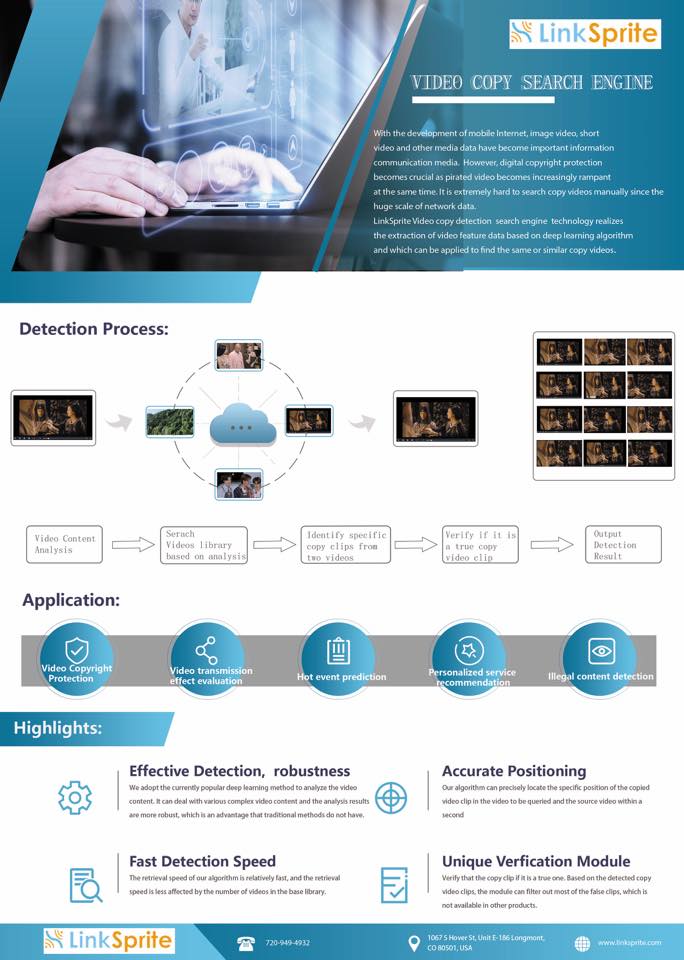With the rapid development of the internet, the network data is growing dramatically. Due to the popularity of internet-based video sharing, the number of video content has reached a very large scale.
However, some pirates use the network platform to sell private videos for improper benefit; some users and groups use the network platform to maliciously spread illegal videos.
Detection Processes
- Video Content Analysis – Deep learning method is used to analyze the video content and extract the features of video content.
- Preliminary search based on the results of content analysis – The video similarity search can find the videos which may have a copy clip of the query video in the library source videos according to the feature of video content. Top-k found videos will be returned, and k can be set according to practical application.
- Identify specific copy clip of the query video and the source video – The results of the last step are used to identify and locate the specific video clips. This step determines whether there is a clip in the source video that matches a clip in the query video. If yes, locate the specific position of the clip in the query video and source video.
- Verify if it is a real copy video clip – Based on the confirmed specific clip to further determine whether it is a true copy. In the actual test, we found that there were still some false detections. So we add this step to screen out most of the false detections.
